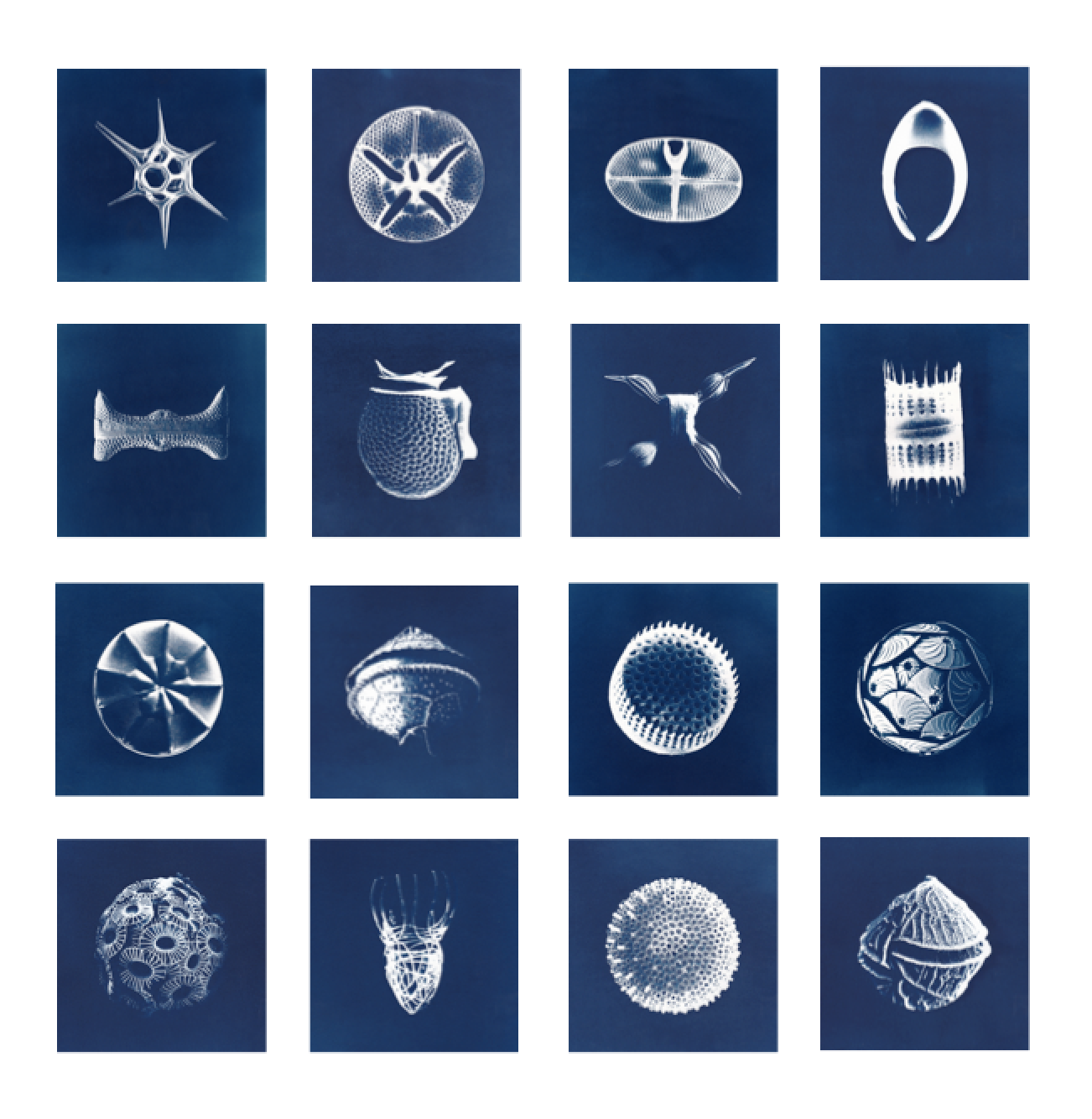I will be showing an installation of 16 Cyanotype prints titled ‘Phytoplankton’ with ‘Roland Belgrave Vingtage Photography’ at Photo London, Somerset house from May 16th-19th 2019.
https://photolondon.org/
See accompanying text and credits below the image
Phytoplankton - by Inga Lisa Middleton
An exclusive, limited edition series of cyanotype prints addressing the pressing subject of marine pollution and the inherent beauty of the planet’s simple life forms.
Phytoplankton display a wondrous number of geometric shapes and natural forms that have an eerily abstract quality. The intricate and symmetrical patterns of diatoms in particular have a striking similarity with mandalas which, according to the psychoanalyst Carl Jung, symbolically represent ’the Self’.
The idea for this series was born when artist Inga Lisa Middleton learned that phytoplankton, single-cell oxygen-producing organisms vital for human existence, are being affected by pollution caused by man and thus serve as an emblem of the self-destructive nature of human behaviour.
Phytoplankton are microscopic algae, amongst the first life-forms on our planet. They perform photosynthesis, synthesizing organic matter from dissolved inorganic substances, and using solar radiation as the energy source. Phytoplankton, as well as forming the first level in the food-chain of the majority of aquatic ecosystems, produce half the total oxygen made by plant organisms on earth.
Like all marine organisms, phytoplankton are strongly threatened by anthropogenic pollution caused by the influx of diverse substances reaching the oceans, as well as by ocean noise and energy input. Plastic is one of the main threats. At least 8 million tons enter the oceans each year, and according to a recent study, there are 5.25 trillion plastic particles floating in the ocean. Microplastic in particular, with the dimension of plankton, can affect every level of the ocean food chain.
In her work Middleton employs the cyanotype process, which was discovered by Sir John Herschel, the British astronomer, chemist and inventor in 1842. The process involves placing an object, in this instance a negative, onto paper sensitised with iron salts, exposing it to UV light and fixing the image by running water. By this method, Middleton creates prints of deep Prussian blue, evoking the beauty and mystery of the ocean.
Credits:
Chiara Lapucci: CNR-IBIMET (National Research Council - Institute of BioMeteorology) LaMMA. Consortium (Laboratory of Monitoring and Environmental Modelling for the sustainable development) Florence, Italy.
The Australian Antarctic Division /Microscopy photography: Rick van den Enden, D.Thomas, P.Campell, Fiona Scott
Diatoms of North America /Microscopy photography: Ian Bishop, Emily.R.Nodine.
